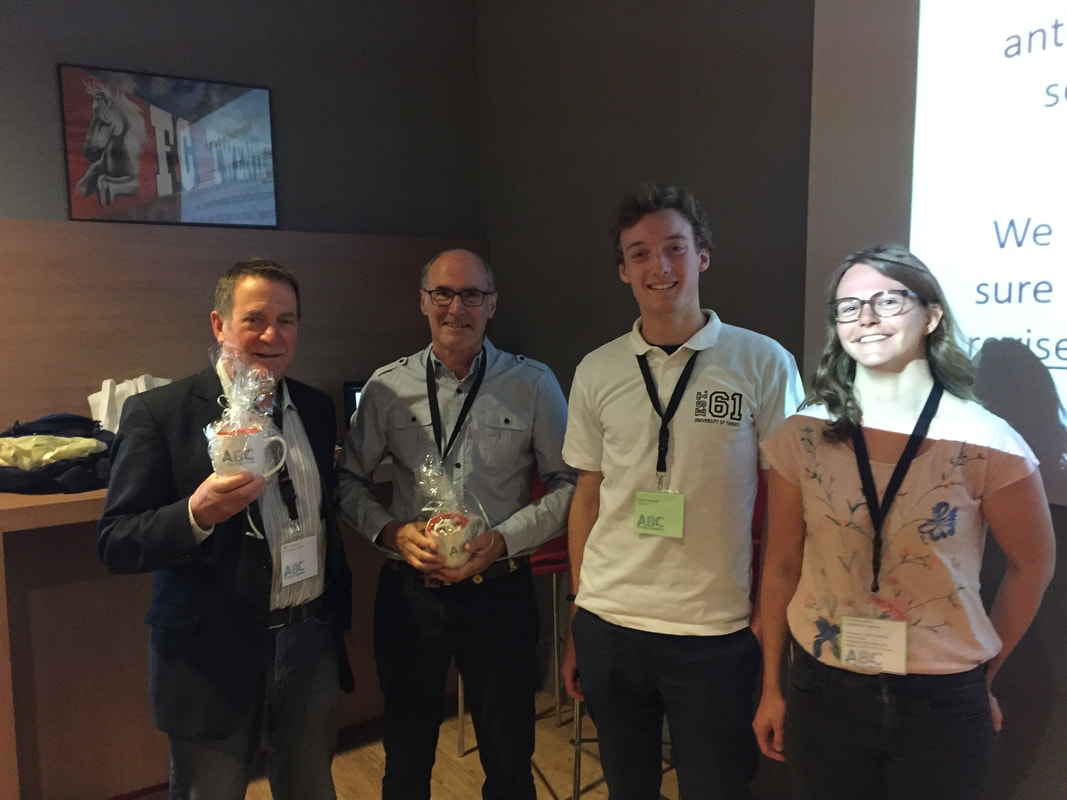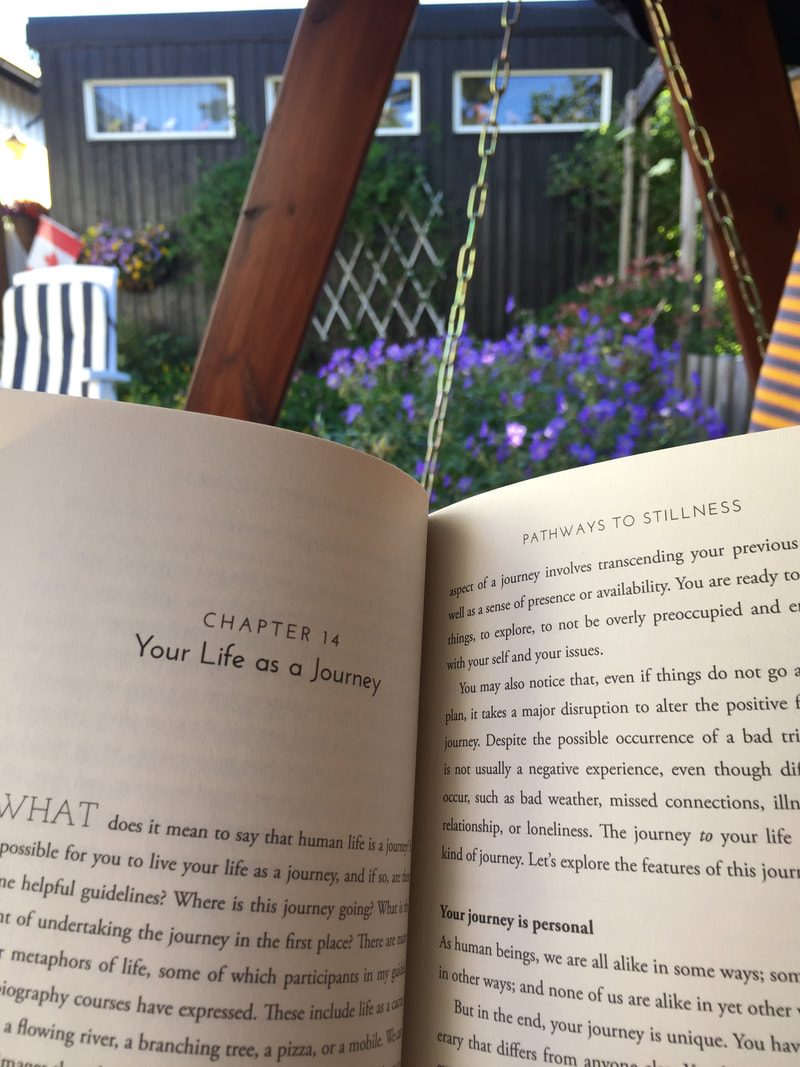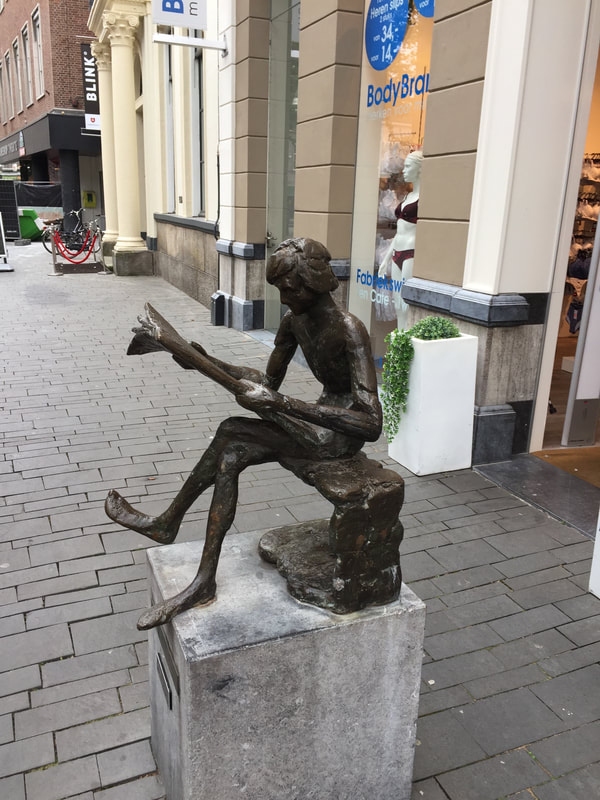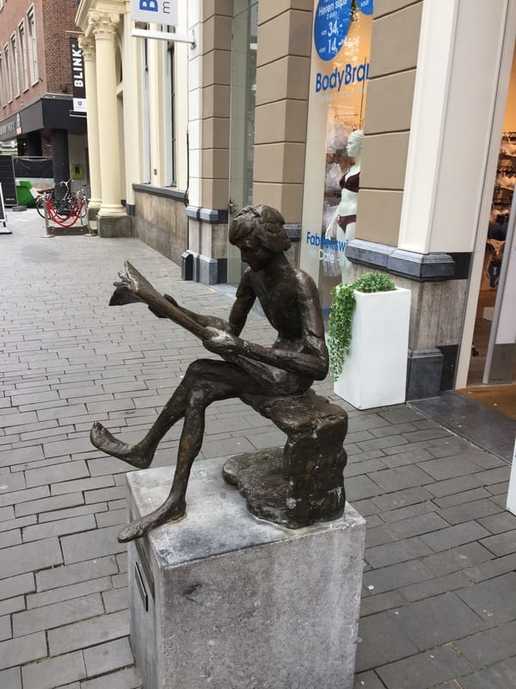|
Our Preconference workshop at the Narrative Matters 2018 conference in The Netherlands was a very successful learning experience for both participants, and for Bill Randall and myself as facilitators. We had participants from Israel, Germany, Netherlands, Great Britain, Japan, China, Canada, and the United States. The workshop explored how we can learn to see our lives as a story—a story that can be changed for the better as our journey continues. The participants also enjoyed the relax-into-stillness movements, which help us to become calm and mindful as we explore our lifestory. A heartfelt thanks to the participants and to the conference organizers!
0 Comments
(This Blog Post is adapted from my book Pathways to Stillness)
There are serious changes that can occur on the journey of aging, such as dementia. For those who experience this, either directly or in proximity to a loved one, it can be hard to encounter the common belief that nothing can be done for these travellers, except to feed and house them. It can feel like an immediate death sentence, as if the journey is over. However, this is far from the truth. Medications can now maintain a person’s level of functioning for years. And, even as the disease progresses, environmental and interpersonal interventions can assist you to maintain dignity and communication— long into the disease. No one would dispute that dementia is an insidious and devastating condition. However, need it end my journey or the journey of a loved one, or someone in my care as a fellow traveller? The following examples illustrate the contrast between an outside view of this kind of change and the inside view of aging as a journey to life. At Christmas some years ago, I went to Montreal to visit my aunt Mary, who was living in a special care home. At one point during the visit, I asked the owner of the home if we could take a photo of my aunt near the Christmas tree in the living room. But near the tree was an older lady sitting in a wheelchair with her head down, working her fingers with some wool that was wrapped around the arm of the wheelchair. “Oh, just move her away,” said the owner. “She’s crazy and doesn’t know where she is or what she is doing.” Out of respect for this lady, I approached her and asked if it was okay to move her. When there was no response, we did so. We took our pictures with my aunt and eventually completed our visit. When I was leaving I decided to wish all the residents a Merry Christmas and shake their hands. I approached the woman we had relocated from the tree, offered my hand, and said, “Merry Christmas to you.” She looked up into my eyes and clearly said, “The same to you and to your family.” I left the home almost in tears and in a moral quandary. I wondered if I should tell the owner that she did not know how to care for these travellers. Will that help, I asked myself, or will it result in worse care for both my aunt and the older person by the tree? This woman was in a setting that made it difficult to find her journey to life with a measure of stillness and peace, as she was being treated from an outside, ageist perspective. This encounter with the lady by the Christmas tree showed me that when we encounter others in this way—looking at the inside rather than just the outside—our own journey is affirmed by life as well. As the spiritual teacher Jean Vanier once said, you begin by thinking that you are helping others, and you realize later that they are a gift to you. Bob and Leo Early dementia survivors (as opposed to victims) show us how it is possible to find meaning in the face of severe challenges on the journey to life. Here are two further examples: Bob was a guest lecturer in my Introduction to Gerontology class. After having survived the shock of diagnosis and early problems with medication, he began to volunteer through the local Alzheimer Society and give public talks. He told us that he had never given a public talk until he was diagnosed with the disease. As you can imagine, after listening to this gentleman there was not a dry eye in the room. The second example is a colleague at St. Thomas University. Leo, until his recent death, was a retired professor emeritus in the philosophy department. He was diagnosed with Alzheimer’s disease. Following his diagnosis, he guest lectured in my gerontology class on two occasions. His favourite story about the disease was that he was able to deny it for quite a while by claiming to be an absent-minded professor. This is both true and an example of the humour he brought to his situation. He eventually wrote a book with his partner about his illness experiences. He said that at first it was incredible, but hard things take time to be fully accepted. He pointed out that we can also have a tendency to save face by keeping silent about unfortunate things that happen to us. We want to keep them hidden, he explained, yet once we accept the truth, there is nothing to hide, and we are free. Leo told me that the diagnosis of Alzheimer’s disease eventually gave him new meaning and purpose in life—to help others deal with the disease through writing, speaking, and being a survivor. Leo was also a student in my Tai Chi class at York Care Centre. This letting go and acceptance brought a measure of stillness to Leo’s life under very challenging circumstances, as it did with Bob. Narrative Matters 2018 @NMConf2018 is a conference that will be held in July in The Netherlands. It brings together researchers, practitioners, writers, and artists who share a passion for lifestories and understanding our lives as stories. Along with my friend and colleague, Bill Randall, I will present a pre-conference workshop on "Narrative Care and Finding Stillness in Your Story". I will also have the pleasure of leading a Tai Chi session for the conference participants. I am looking forward to these activities and to the wonderful conversations that take place outside the formal presentations.
Narrative Care can be practiced in your professional and personal relationships—and also with yourself. There are two steps in helping you to help yourself find more stillness and peace in your life. The first step is to relax-into-stillness by trying the easy-to-learn movements at the end of my book. Then the second step is to be a friend to yourself and to gently explore the chapters in the book. There is no right or wrong—it is about discovering what has meaning for you and your journey. For example, try Chapter 6—Finding Your Way.
All you need to do to access stillness is nothing—just stop and be in the moment. But you can also enhance your stillness experience through narrative care-- by exploring the story of your life. We think, feel, and act on the basis of the stories that we tell ourselves, and others, about what is going on— both inside and in the world around us. When we share our lifestory in a non-judgemental, stillness environment, we allow what is meaningful to us to emerge—our ordinary wisdom. Meaning and wisdom lead to more stillness in your life (Read More in my book).
I have a friend who tells me this when I am confused and anxious. He says things like, “things are happening for you— not to you”. Then I say that I do not understand and he will say, “you are not supposed to understand, you are meant to accept”. All I know at this point in my journey is that making an effort to fix things, and anxiously looking for relief, does not work well—and even makes things worse. So I have begun to trust in not knowing and not doing. I use my stillness practice to help calm my “monkey mind” and I wait for a way forward—and I feel so much better! I inviite you to try this with your own Pathways to Stillness (Read more in my book).
A few months ago our community lost a special person—Jim Day. The title of this post is from the Celebration of Life announcement in his honor. To quote the announcement again, “Jim firmly believed that in times of sadness there is always room for smiles and even laughter. When things are dark, if we look we can always find light and a reason to count our blessings.” In all my encounters with Jim, I found that he did live this way, even when he was in his final days. He is an inspiration to all of us to continue the “journey to life” no matter what is happening inside us and around us.
In a recent article in our local newspaper (St. Croix Courier July 28, 2017) we meet Doug Kierstead. At 98, he makes Swedish weave blankets. He served in the Second World War and assisted in the liberation of Holland. He has also been twice a widower. He says that his hands were shaking— “It is surprising how calming it (Weaving) is on your nerves”—“You relax and it makes an awful difference”. He says that he also loses track of time in this activity, he just works away at it. Doug is an example of someone who has discovered a pathway to stillness later in life. Explore your pathways.
There is recent research that talks about successful aging. In order to age successfully you need such things as health, financial security, and social relationships. But there is a problem with this picture. Life happens and we may experience many forms of loss on our journey through this life. So we could fail or be unsuccessful in two ways— first, we suffer because of our losses, and second, we have failed to measure up in the areas we “should have” succeeded. In this scenario, there are winners and losers in the game of aging. The term successful aging itself is not appropriate in considering the journey of aging and changing. Meaningful aging is a better word—it makes the discussion personal and unique, and helps us look inside for our own wisdom and pathways to stillness. Read more in my book Pathways to Stillness.
If we had a choice, I suspect that hardly anyone would choose to suffer. Our lives are regularly subjected to unwanted changes—physical, emotional and even spiritual. The story of our life changes meaning— often without any warning. Yes, there are also many wonderful changes, but these do not cause us any problem, unless we hang on to them if and when they do change. However, it is worth embracing the idea that the universe is doing things for us and not to us. What we take to be painful experiences very often result in new meaning in our lives, more peace, and less personal baggage. The key to this new direction in your journey to more life is simple but takes practice—let go, accept, allow and follow.
You grow, learn, and find meaning, ordinary wisdom, and stillness through stillness practice and through your lifestory. However, the restorying journey does not involve simply choosing a better story to replace the old one. Also, new meaning does not come from forcing yourself to think positively about a troublesome situation. In fact, I agree with the statement that positive thinking can become a prison.
Your life as a story is made up of thoughts, emotions, and actions or behaviour—that is, how you think, feel, and act. It may be possible to change your thoughts about something, and there are techniques to help you try this approach. Yes, positive thinking is one of these techniques. However, the effort it takes to maintain this attitude may become exhausting, as with such challenges as chronic pain, for example, or an addiction. The problem is that you are still attempting to control or fix the problem, as your thinking mind scrambles around to find a positive solution. In addition to this, it is a prison in the sense that you are either a winner or a loser, depending on how successful you are in keeping up the program. In contrast to this, a stillness approach, such as restorying, suggests that you first get out of your thinking mind, step back, and try to see the larger picture. In this way, instead of fighting or denying the particular change that has occurred in your life, you make room in your present story for the change that has occurred, or that you want to occur. It is about finding new meaning in your whole story, not just attempting to fix the broken part. |
Pathways to Stillness BlogMy Blog is about how you can discover your own Pathways to Stillness, and why that is so valuable to your life. We will explore what it means to lose and regain our sense of “our story” in the midst and aftermath of loss—negative beliefs about aging and how we can make them more positive, and the many benefits reaped by creating a refuge of stillness within.
January 2024
Categories |











 RSS Feed
RSS Feed




